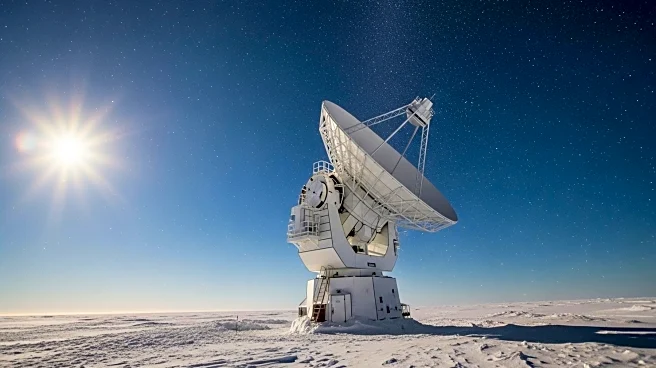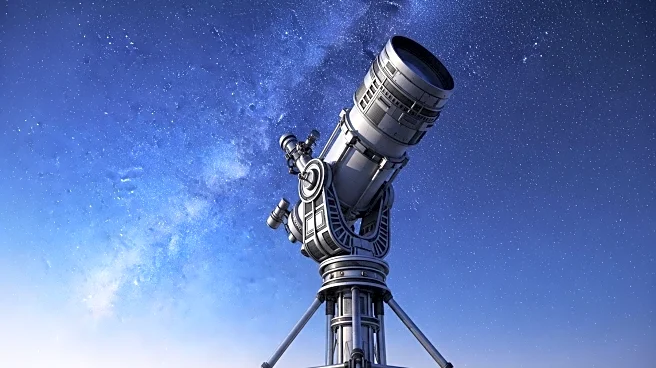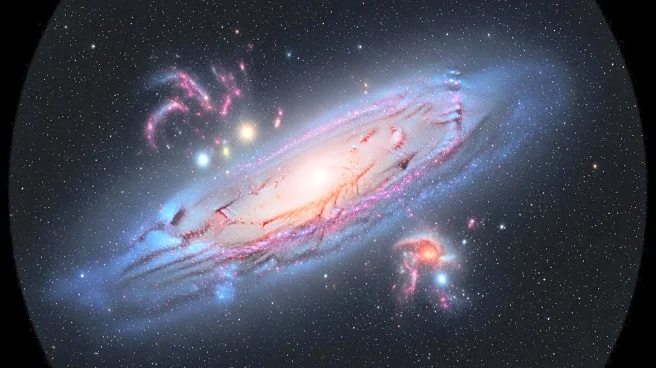What's Happening?
The South Pole Telescope, located near the Amundsen-Scott South Pole Station, is a key instrument for studying the cosmic microwave background and other astronomical phenomena. Completed in 2007, this 33-ft radio telescope is designed to detect faint microwave signals from the early universe, aiding in the understanding of the universe's origins, composition, and evolution. The telescope also contributes to research on dark energy, galaxy clusters, and large-scale cosmic structures.
Why It's Important?
The South Pole Telescope plays a crucial role in advancing our knowledge of the universe, particularly in areas like dark energy and cosmic microwave background radiation. Its location in Antarctica provides optimal conditions for observation due to minimal light pollution and dry air. The research conducted with this telescope has significant implications for cosmology and the understanding of fundamental questions about the universe's formation and development.











